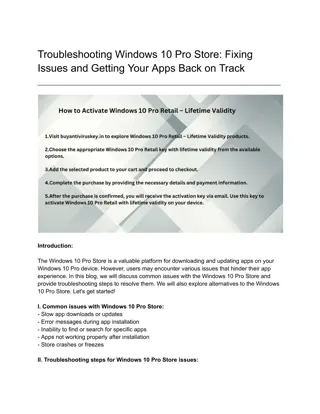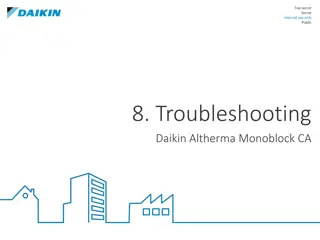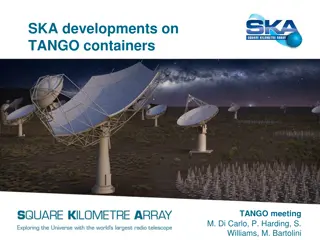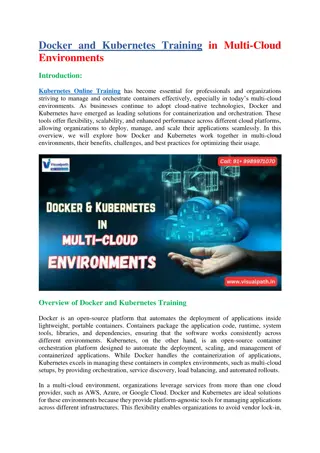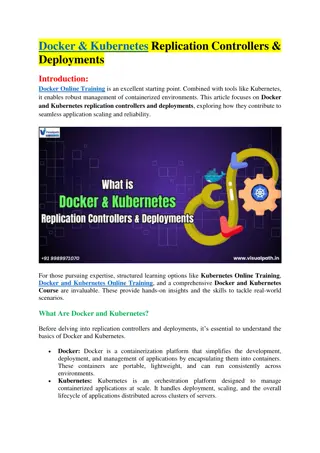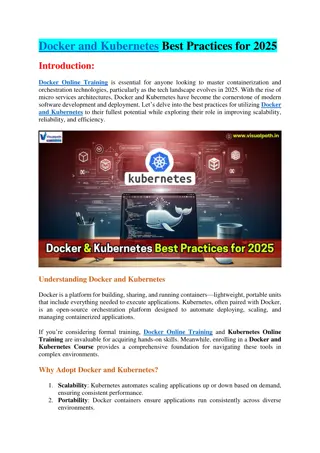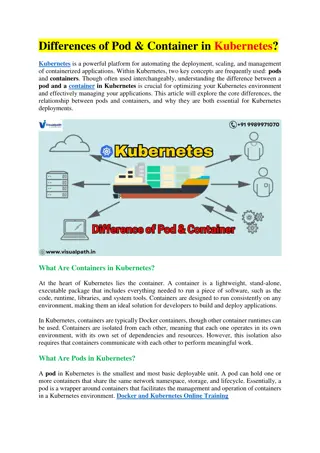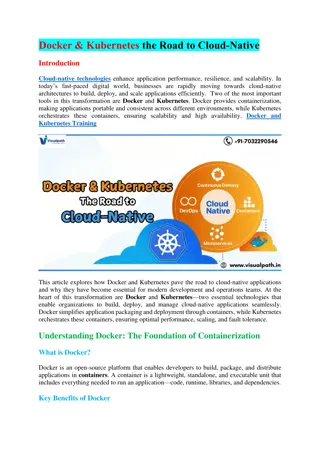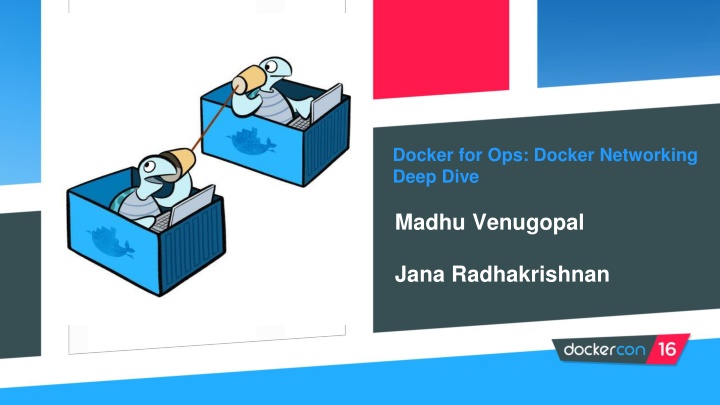
Dive Deep into Docker Networking for Ops with Libnetwork
"Explore the advanced networking capabilities of Docker with Libnetwork, including multi-host networking, secure data and control planes, service discovery, load balancing, and more. Discover new features in version 1.12 and learn about native mesh architecture for enhanced scalability and performance."
Download Presentation

Please find below an Image/Link to download the presentation.
The content on the website is provided AS IS for your information and personal use only. It may not be sold, licensed, or shared on other websites without obtaining consent from the author. If you encounter any issues during the download, it is possible that the publisher has removed the file from their server.
You are allowed to download the files provided on this website for personal or commercial use, subject to the condition that they are used lawfully. All files are the property of their respective owners.
The content on the website is provided AS IS for your information and personal use only. It may not be sold, licensed, or shared on other websites without obtaining consent from the author.
E N D
Presentation Transcript
Docker for Ops: Docker Networking Deep Dive Madhu Venugopal Jana Radhakrishnan
Agenda Overview What is libnetwork New features in 1.12 Deep Dive Multihost networking Secure Control Plane Secure Data plane Service Discovery Native Loadbalacing Routing Mesh Finish Demo Q&A
What is libnetwork? It is not just a driver interface Docker networking fabric Defines Container Networking Model Provides builtin IP address management Provides native multi-host networking Provides native Service Discovery and Load Balancing Allows for extensions by the ecosystem
Multi-host Networking without external k/v store New features in 1.12 swarm mode Secure Data-Plane Secure Control-Plane Cluster aware De-centralized control plane Highly scalable CNM Load Balancing Service Discovery Routing Mesh
Macvlan driver Out of experimental Integrates with Underlay Place containers in your existing vlans
MacVlan # Create a macvlan network $ docker network create -d macvlan \ --subnet=192.168.0.0/16 \ -ip-range=192.168.41.0/24 \ --aux-address="favorite_ip_ever=192.168.41.2" \ --gateway=192.168.41.1 \ -o parent=eth0.41 macnet41 # First address is the specified gateway, second is aux $ docker run --net=macnet41 -it --rm alpine /bin/sh
Multi-host networking Manager Service Create The VXLAN based data path remains unchanged No external key-value store necessary Central resource allocation Improved performance Highly scalable Network Create Orchestrator Task Create Allocator Scheduler Dispatcher Task Dispatch Task Dispatch Engine Engine Libnetwork Libnetwork Gossip Worker2 Worker1
Network control plane Cluster Scope Gossip Network Scope Gossip Gossip based protocol Network scoped Fast convergence Secure by default periodic key rotations swarm native key-exchange Highly scalable W1 W2 W3 W1 W5 W4 Network Scope Gossip
Secure dataplane Worker2 non- secure network Worker1 Available as an option during overlay network creation Uses kernel IPSec modules On-demand tunnel setup Swarm native key-exchange Periodic key rotations Highly performant secure network IPSec Tunnel secure network secure network Open UDP traffic IPSec Tunnel IPSec Tunnel secure network non- secure network Worker3
Service Discovery Provided by embedded DNS Highly available Uses Network Control Plane to learn state Can be used to discover both tasks and services DNS Resolver DNS Resolver DNS requests DNS Server engine
Internal Load balancer Task2 Service A Task1 Service A Task3 Service A Provided by embedded DNS Highly available Uses Network Control Plane to learn state Can be used to discover both tasks and services Minimal Overhead because of CNM Can use DNS RR instead as an option VIP LB VIP LB Client1 Client2
Routing mesh External Loadbalancer (optional) 8080 8080 Builtin routing mesh for edge routing Worker nodes themselves participate in ingress routing mesh All worker nodes accept connection requests on PublishedPort Port translation happens at the worker node Same internal load balancing mechanism used to load balance external requests Worker1 Worker2 8080->80 8080->80 VIP LB VIP LB Ingress Network Task1 ServiceA Task1 ServiceA Task1 ServiceA
Finish Demo and Q&A


